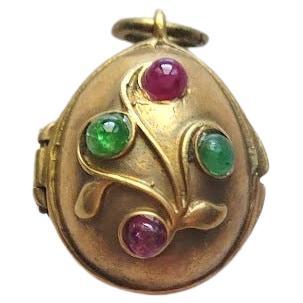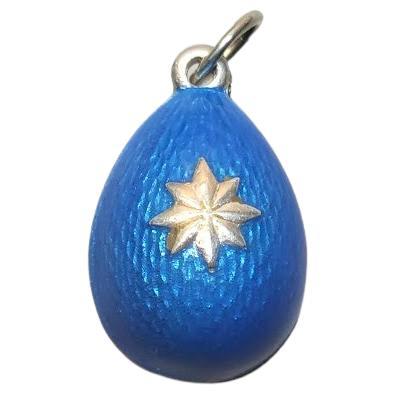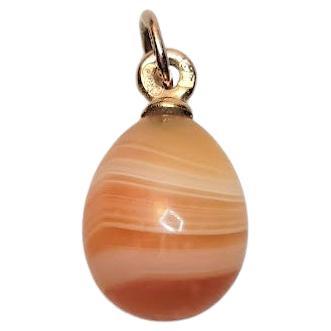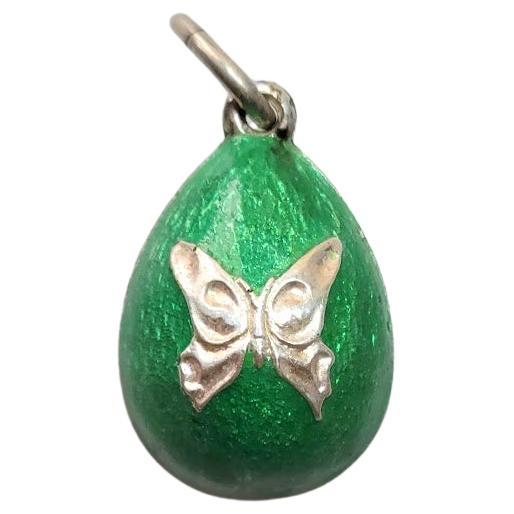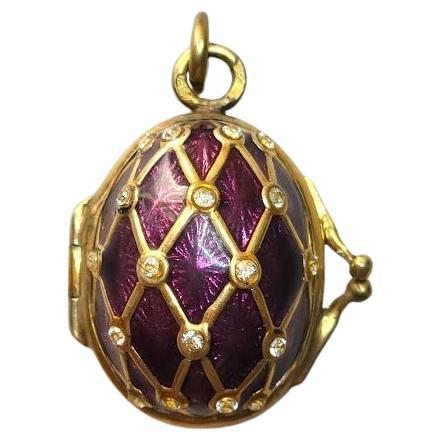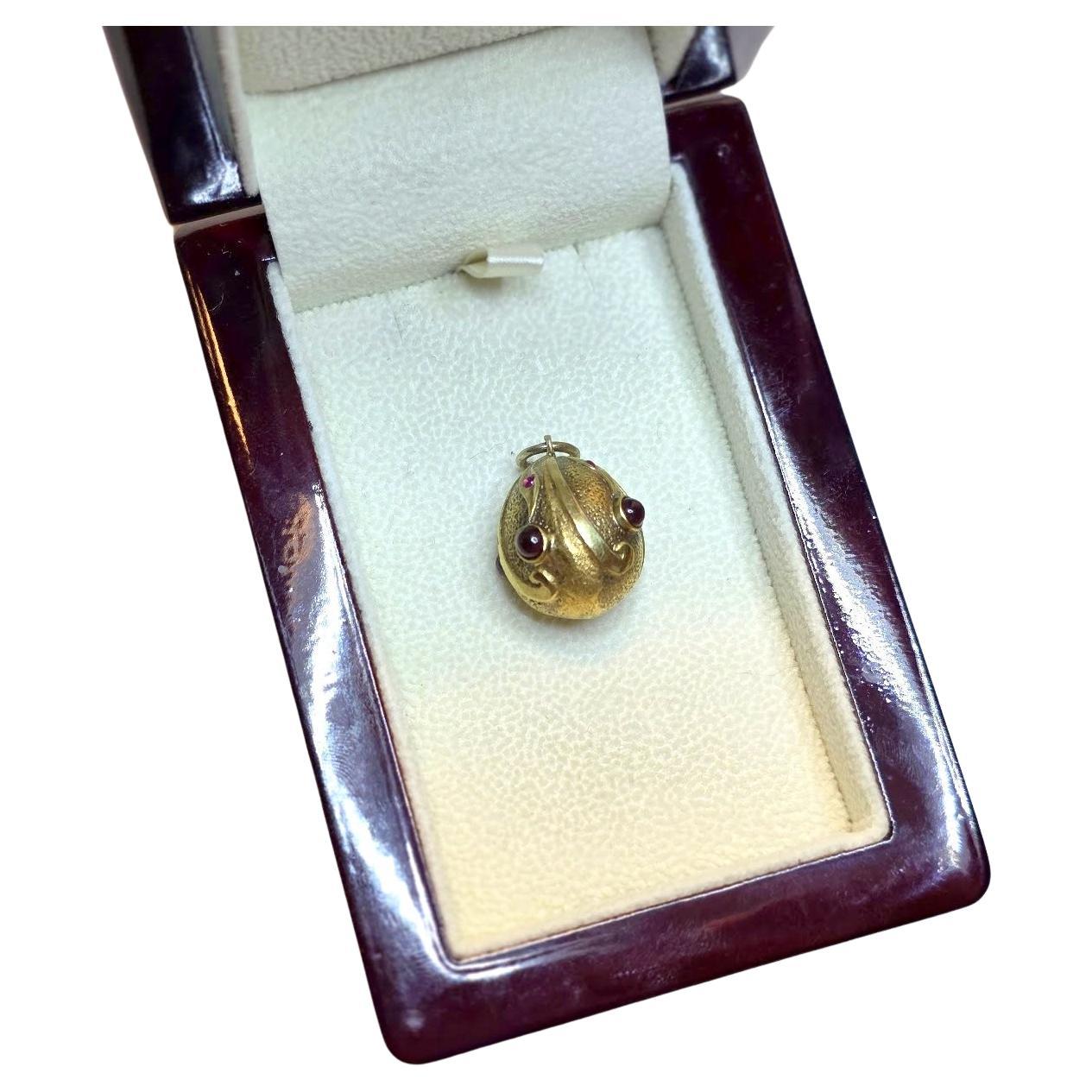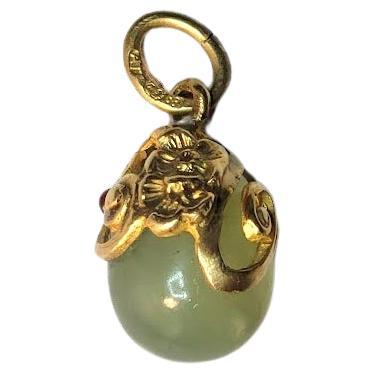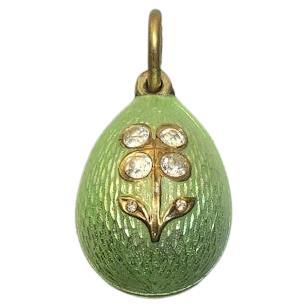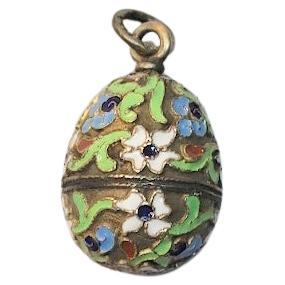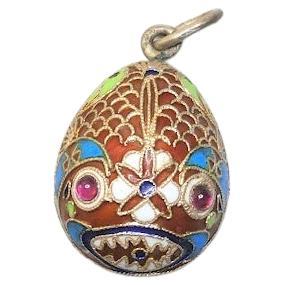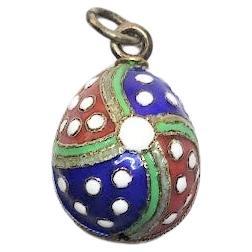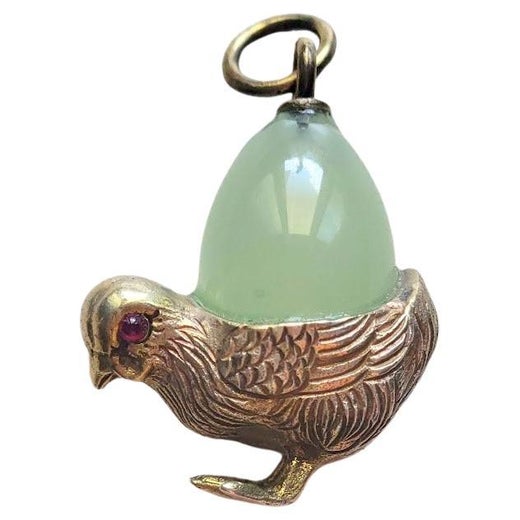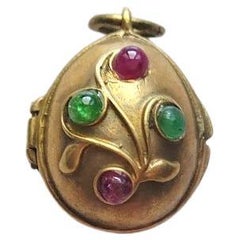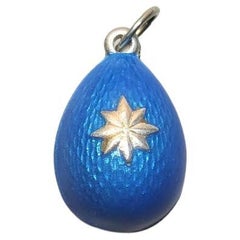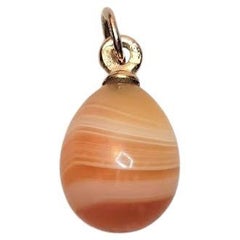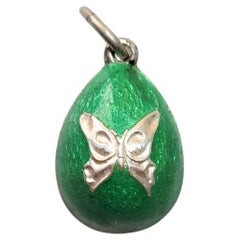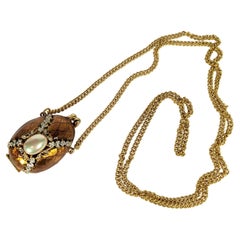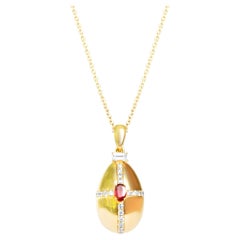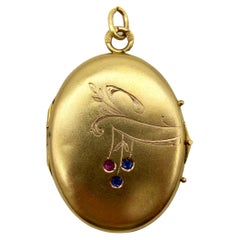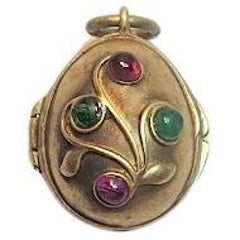
Imperial Egg Locket Pendant With Rubies and Emeralds, Workmaster Theodore Ringe
View Similar Items
Imperial Egg Locket Pendant With Rubies and Emeralds, Workmaster Theodore Ringe
About the Item
- Creator:
- Metal:
- Stone:
- Stone Cut:
- Weight:6.67 g
- Dimensions:Width: 0.67 in (17 mm)Length: 0.84 in (21.1 mm)
- Style:
- Place of Origin:
- Period:
- Date of Manufacture:1880
- Condition:Wear consistent with age and use. At magnification, you can see an unsuccessful attempt to remove the precious stones; one of the rubies is damaged. Otherwise, the locket pendant is in order in accordance with its respectable age and use.
- Seller Location:Chesterland, OH
- Reference Number:1stDibs: LU3746224145012
Fabergé
While the House of Fabergé is best known for creating the lavishly ornate and intricately devised Imperial Easter eggs given by the last czars to their families as annual holiday gifts, it was the most prestigious Russian luxury goods maker of the late 19th and early 20th centuries.
Serving the aristocracy and the well-to-do through stores in St. Petersburg, Moscow and as far afield as London, Fabergé crafted a wide range of brooches and other jewelry, clock cases, silver and myriad objets de vertu that included picture frames, cigarette cases, cufflinks and carved hardstone floral and animal figurines. Following the revolution, the firm was closed by the Soviet state in 1918.
Master goldsmith Gustav Fabergé, a descendant of Huguenot emigrées, founded the company in St. Petersburg in 1842. The firm did a brisk trade among the lesser nobility and the merchant class, but it flourished under the guidance of Gustav’s eldest son Peter Carl Fabergé — known also as Karl Gustavovich Fabergé — who took over in 1872.
Cosmopolitan, widely-traveled and himself a master goldsmith — he was sent on a Grand Tour in the 1860s — the younger Fabergé drew early design inspiration when he volunteered to catalogue and restore pieces in the imperial jewelry collection in the Hermitage.
Fabergé pieces based on historical jewelry from the Hermitage caught the attention of Czar Alexander III at a Moscow exhibition in 1882, and three years later he commissioned the first Imperial Easter egg as a gift for the czarina. Czar Nicholas II continued the tradition, presenting two eggs each Easter — one for his wife and one for his mother.
Relatively simple in design compared to the complex cloisonné-adorned eggs that followed, the first Fabergé egg was a white-enameled ovoid containing a gold “yolk” that held a gold hen, which in turn contained a replica of the imperial crown from which hung an egg-shaped ruby pendant.
As the appointed goldsmith to the royal court, the House of Fabergé became the darling of Russian aristocrats as well as wealthy patrons across Europe. Many and varied objets — hundreds of thousands by one count — were made to meet their demand. The firm employed some 500 craftsmen and designers when it was shuttered.
After the Russian Revolution, the Fabergé name and trademark endured a checkered passage through the 20th century.
Family members left their homeland in 1918 and set up a new business in Paris that was mainly concerned with repairing and restoring earlier-made wares. The name was adopted by an American fragrance and beauty products maker in the late 1930s, and later authorized by the family in a 1951 agreement. The trademark has been subsequently sold several times, and attached to numerous products including jewelry.
Fabergé pieces are richly redolent of a romantic past, and a source of thorough delight — for connoisseurs, true Fabergé refers to items made in the firm’s brief, golden decades from 1885 to 1917.
Collectors are advised to make a study of Fabergé works in museum collections such as the Victoria & Albert and the Royal Collection in London to gain an understanding of the quality of genuine goods made by the original firm, and then to purchase only from reputable and reliable dealers, such those at 1stDibs.
Find Fabergé eggs for sale and other objects and vintage jewelry on 1stDibs.
Noblesse Oblige Studio
More From This Seller
View AllAntique Late 19th Century Russian Empire Pendant Necklaces
Emerald, Ruby, Silver, Gilt Metal
Early 20th Century Russian Russian Empire Pendant Necklaces
Silver, Enamel
Antique Late 19th Century Russian Empire Pendant Necklaces
Agate, Gold, Rose Gold
Antique Late 19th Century Russian Russian Empire Pendant Necklaces
Silver, Enamel
Antique Late 19th Century Russian Empire Pendant Necklaces
Silver, Enamel, Gilt Metal
Antique Late 19th Century Russian Empire Pendant Necklaces
Garnet, Ruby, Silver, Gilt Metal
You May Also Like
1990s American Artisan Pendant Necklaces
Enamel, Gilt Metal
2010s Pendant Necklaces
Diamond, Ruby, 14k Gold
Antique 1830s Georgian Brooches
Emerald, Ruby, Gold
20th Century Russian Russian Empire Pendant Necklaces
Ruby, Sapphire, 14k Gold
Antique 1880s British Late Victorian Pendant Necklaces
Diamond, Ruby, Gold, Yellow Gold, Silver
2010s Italian Classical Roman Pendant Necklaces
Ruby, Sterling Silver
Recently Viewed
View AllRead More
A Centuries-Old Style, Lockets Have Never Lost Their Romantic Appeal
Emblems of heartfelt emotion, elegant vessels for photos and keepsakes and perfect for layering, these special ornaments are an essential component of any thoughtfully curated jewelry collection.
Everything You’d Want to Know about Enamel Jewelry
From vibrant to subtle, elegant to cheeky, enamel jewelry encompasses a wide range of colors and styles, and there are almost as many techniques for creating these distinctive pieces.
